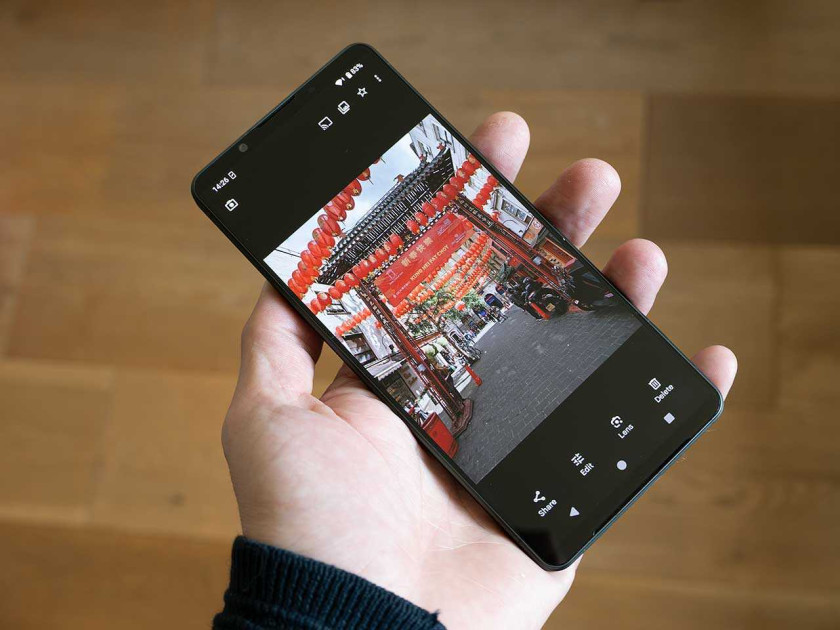[adinserter block=”1″]
Introduction
The Sony Xperia 1 VI is the company’s latest flagship smartphone for 2024, available now in three different colours – Black, Khaki Green and Platinum Silver.
It’s priced at £1299 for the 256GB storage version in the UK and €1400 in Europe. It won’t be released in the United States. The Xperia 1 VI is manufactured in Japan.
The main new feature in this year’s update is an innovative optical telephoto zoom lens that has been extended to a maximum reach of 170mm. Essentially, the third camera module offers both 85mm and 170mm telephoto focal lengths, and even better, you can seamlessly zoom back and forth between them without any loss in quality.
The telephoto lens is also employed to offer impressive macro photography capabilities with a maximum magnification of approximately 2x and a minimum focus distance of just 4cm.
The Xperia 1 VI features a triple front-facing Zeiss lenses, including the aforementioned 85-170mm module plus 16mm, 24mm and new 48mm wide-angle focal lengths, all supporting 12 megapixel resolution.
In addition, there is a special 48 megapixel shooting mode that utilises the full width of the sensor to provide the greatest amount of detail (24mm lens only).
It offers 4K HDR video recording at up to 120fps for all three camera modules along with real-time AF tracking and the S-Cinetone colour profile.
The 12 megapixel front selfie camera offers 4K 60fps recording, 6 Creative Looks and S-Cinetone profile support.
Sony have combined the three photo/video apps that were on previous Xperia 1 models into a single app, which offers Photo, Bokeh, Video, Slow-motion and More options plus a Pro mode.
The Pro shooting mode for stills offers full manual control over key settings such as exposure, ISO speed, focusing and drive modes. The Pro Video mode will be made available via a firmware update later in 2024.
The dedicated shutter button is now bigger to improve operability and the metal frame features an engraved V-groove for a more robust finish and improved grip. The large and efficient 5,000 mAh battery provides up to 2 days of battery life.
The Xperia 1 VI features the latest Qualcomm Snapdragon 8 Gen 3 processor, 12GB RAM, 5G and Wi-Fi 6 connectivity, a new 6.5-inch FHD+ HDR OLED display with 19.5:9 aspect ratio, rapid 120Hz refresh rate and no notches, 256GB or 512GB of internal storage which is further expandable up to 1.5TB via a MicroSD card, and live streaming on YouTube, Facebook and Realtime Messaging Protocol (RTMP).
There’s also 30fps burst shooting with continuous autofocus focus and autoexposure and low-light noise reduction, real-time AF for humans and animal that newly recognises the body and head position as well as eyes and faces, and 5x slow-motion recording in 4K HDR 120fps.
Ease of Use
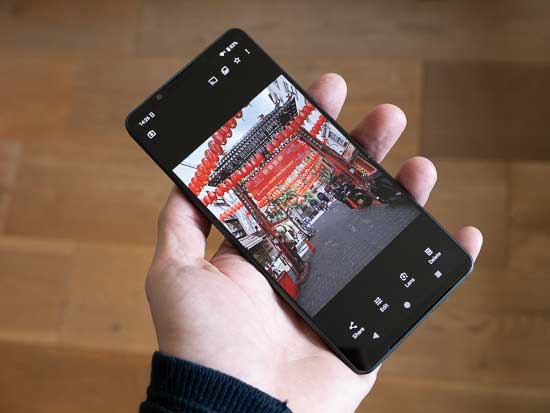 |
For 2024, Sony have decided to break with the long-standing flagship Xperia tradition of employing an unusual 21:9 aspect ratio, something that instantly separated it from all of its main rivals. Instead they’ve opted for a new 19.5:9 aspect ratio which is a much common aspect ratio for modern mobile phones.
So while the Xperia no longer stands out from the crowd in terms of its size and dimensions, it does give this new device a more conventional cinematic feel that lends itself particularly well to watching movies and video content.
Also biting the dust is the 4K screen of previous Xperia 1 models, replaced instead by a lower resolution FHD+ HDR OLED display.
The new display’s brightness is now 1.5x times brighter than the previous model, however, so it’s not all bad news in this department, especially as the equally new Sunlight Vision feature makes it easier to use the device even in glaring environments.
Still, the move to a 19.5:9 1080p screen is a big decision by Sony given the excellent and unusual 21:9 4K screen used on the previous model, one that may disappoint hardcore fans.
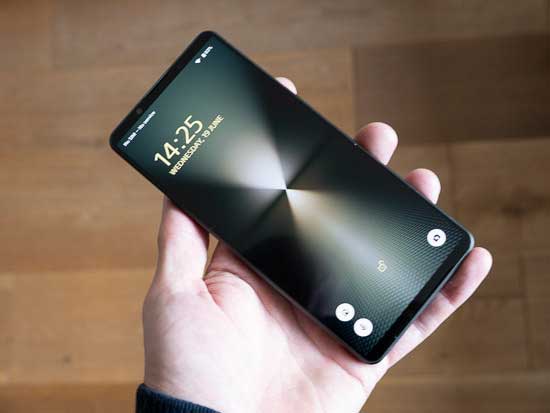 |
From a handling point of view, this new Xperia 1 model is both wider and less tall, making it easier to hold especially for single-hand use, helped by the tiny textured strips that run along the length of the edges of the device.
The rear is finished in a matt textured surface that doesn’t look particularly “premium” but does help with the handling and also prevents fingerprints from accruing.
We also appreciated the newly raised, textured dedicated shutter button which is both quicker to locate and more tactile than the previous iteration. The combined power on / fingerprint sensor is slightly indented, though, and has a very indistinct action too.
Corning Gorilla Glass Victus on both sides make the Xperia 1 VI a tough phone, especially as it also offers water resistance to an IP65 rating and dust resistance to an IP68 rating.
You might still want to buy a protective case, although this is definitely one of the less delicate devices on the market thanks to those textured surfaces covering both the back and frame.
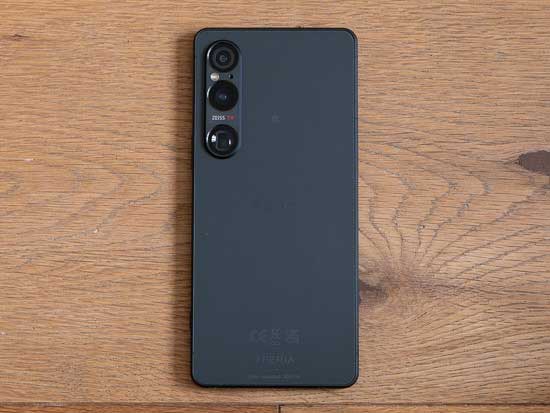 |
The battery has exactly the same 5,000mAh capacity as the Xperia 1 V, but offers much longer battery life thanks to a combination of the new Qualcomm Snapdragon 8 Gen 3 processor and the less demanding FHD screen.
It’s so good that you can expect around two days of battery life before it’s completely drained or an amazing 36 hours of continuous video playback, all within a pretty lightweight 192g body.
The Xperia 1 VI can be charged to 50% in around 30 minutes and to 100% in around 90 minutes with the XQZ-UCI 30W fast charger. There is also compatibility with a 15W wireless charger dock, although again such a unit is not supplied with the phone. Note that Sony do not provide a charger or cable in the box for environmental reasons.
A further look around the phone reveals the single SIM/micro SDXC card slot, volume control, on/off power button with integrated fingerprint sensor, and a shutter button that can be used for image capture with the camera. There’s also a proper 3.5mm headphone jack, too, plus a USB-C charge port and SIM caddy.
For quicker and easier access, we would still like to see an on-screen fingerprint scanner, instead of the integrated power on/off button scanner.
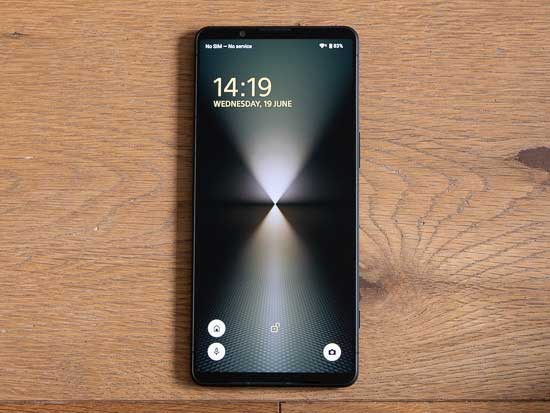 |
As standard on the UK/European model, the internal memory is a generous 256GB and a micro SDXC card can also be installed with support for cards up to 1TB.
On the rear is the triple lens camera and a built-in flash, with AI used for autofocus and depth sensing rather than a 3D iToF sensor. Thankfully, the lenses are positioned in the upper left as you hold the camera in landscape format for taking photos, meaning your fingers are much less likely to get in the way.
The primary rear lens has a 24mm focal length with 82° field of view and maximum f/1.7 aperture.
You then have the new dual telephoto zoom 85mm and 170mm camera with 28° and 15° fields of view and f/2.3 and f/3.5 maximum apertures respectively, plus the 16mm ultra-wide lens with 123° field of view and f/2.2 maximum aperture.
One of the biggest attractions of the Xperia 1 VI for keen photographers is the updated optical zoom module that now runs from 3.5x to 7.1x, providing a seamless focal range of 85-170mm.
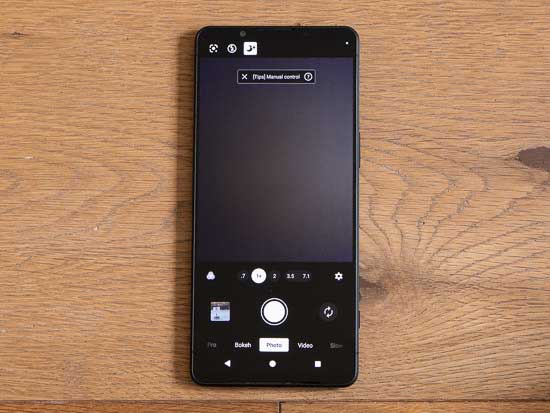 |
Being able to zoom to anywhere in the 85-170mm range either using the onscreen slider or the physical volume buttons is still a pretty amazing feature for a smartphone even in 2024.
The effective 85mm zoom range is much more versatile than on previous Xperias, covering everything headshots to telephoto subjects, all impressively without any loss in quality.
We still hope to see Sony employ this technology on the other Xperia camera modules – perhaps a 24-50mm standard zoom module, for example?
The clever telephoto lens is also employed to offer impressive macro photography capabilities with a maximum magnification of approximately 2x and a minimum focus distance of just 4cm.
Using the new Telephoto Macro mode, the default focal length is set to 120mm and manual focusing is employed with a Peaking system available to help ensure that the subject is sharp.
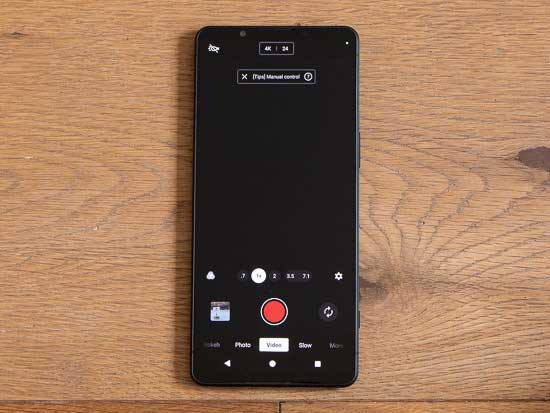 |
We’d have liked to see the camera able to auto-focus in this mode as well, as target users will probably be unfamiliar with the concepts of both manual focusing and peaking, but it’s quite intuitive once you’ve tried it a few times.
A quick tap of the 120 icon reveals that you can increase the focal length all the way up to 360mm, but this is done digitally rather than optically so best to stick to the default.
It’s also possible to digitally zoom in with any of the three lenses, up to a maximum of 510mm when using the 85-170mm lens, although the image quality again predictably suffers.
There is also a single front-facing 24mm ‘selfie’ camera with 12 megapixel resolution, 78° field of view and f/2.0 maximum aperture.
While out and about, we really appreciated what each of the 16mm, 24mm and 85/170mm lenses bring. For landscape scenarios, that ultra-wide lens is particularly useful. We largely ignored the digital zoom because of the adverse impact on image quality, and strongly suggest that you do the same.
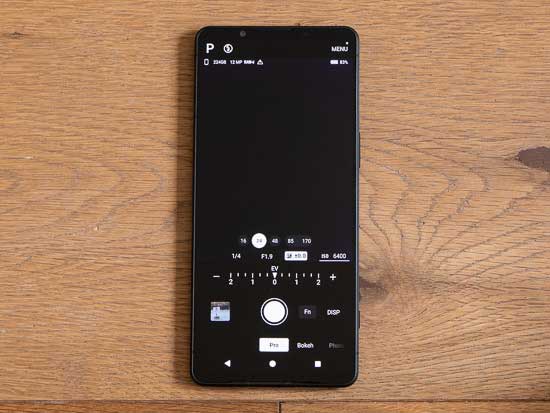 |
Each lens offers a maximum 12 megapixel image size at 4:3 aspect ratio, while using a different area of the new sensor, with the primary 24mm lens utilising the sensor fully.
By default the 48 megapixel main camera module pixel-bins down to 12 megapixels, but there is a special 48 megapixel mode in the More menu that delivers the highest resolution that the Xperia 1 VI is capable of.
Somewhat disappointingly, though, JPEG is the only supported file format in this mode, with the RAW format only available when selecting the Pro shooting mode, where 48 megapixels isn’t an option.
Speaking of disappointments, Sony have decided to amalgamate all of the different camera and video apps into a single camera app – so the dedicated Cinema Pro and Photo Pro apps and the Basic mode from the previous model have been merged into one.
So far, so good, but unfortunately it seems that Sony didn’t have time to merge all of the features from those 3 separate apps, especially on the video side.
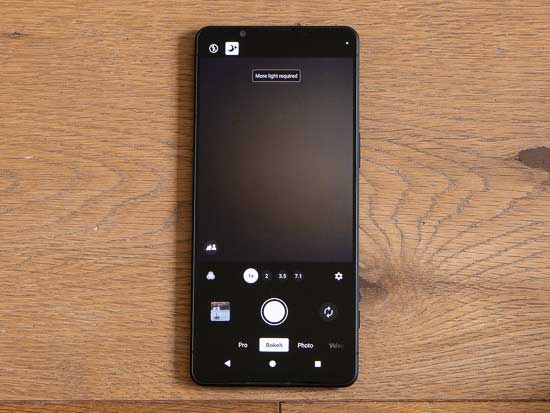 |
The aforementioned Pro mode is for still photos only, with Sony promising that a video-specific Pro model will be added via a firmware update towards the end of 2024.
So advanced video users will have to wait for half of this product life cycle before they can use the same features found in the Cinema Pro app on the Xperia 1 V.
For more casual users, however, the new single app approach makes a lot more sense than the previous 3-way approach, closely resembling many other camera apps from rival manufacturers and therefore proving more intuitive for new Xperia users.
The camera app user interface also automatically rotates when using the camera in portrait mode, which makes using the various onscreen icons just as easy as in landscape mode.
Just like in the latest Sony Alpha cameras, the continuous auto-focusing system in the Xperia 1 VI proved to be excellent in a wide range of scenarios.
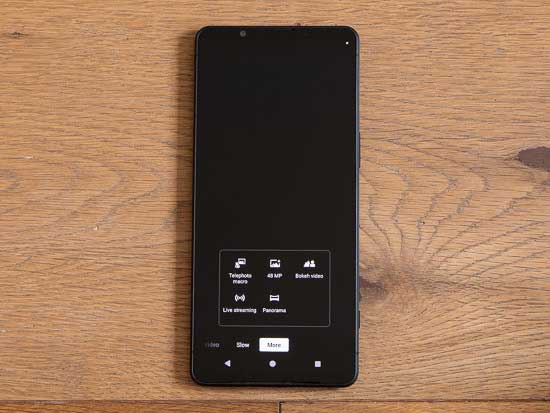 |
This is helped by the addition of real-time tracking straight from the Alpha range of mirrorless cameras to all three camera modules which now recognises the body and head position as well as eyes and faces. This feature can accurately detect and focus on a subject and then keep tracking it even if it temporarily moves out of sight.
Sony’s industry-leading real-time face and eye detection AF is available here for both people and animals and has unerring accuracy and reliability.
There is the reassurance that continuous AF is on the money via those signature green squares that you get displayed over your tracked subject – be it face or eye detection.
Then there are the drive modes supported by fast continuous AF – up to 20fps with continuous AF and AE. That headline-grabbing continuous high drive mode is sadly only available when using the 24mm lens only via the Pro shooting mode, though, while the other lenses are supported with a still pretty fast 10fps continuous low drive mode.
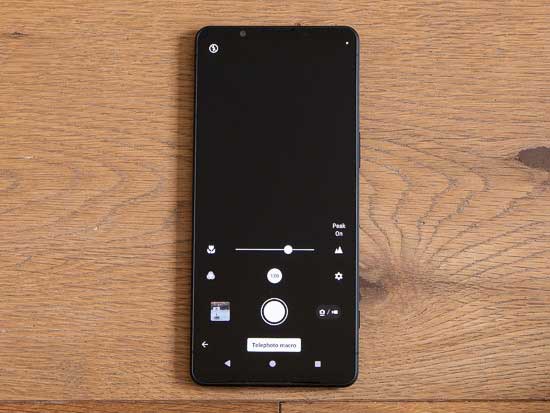 |
In low contrast light, AF is excellent too, for a phone. Whatever the scenario, the Xperia 1 VI is lightning quick for focus and capture. It almost seems absurd (in a good way) to have such action-photography-friendly features on a “mere” phone.
On the video side you get 4K (3840×1644) or 2K (2520×1080) capture at up to an 120fps and up to 5x slow-motion mode, plus eight colour grade presets in addition to a standard look. The shutter is automatically adjusted according to your FPS, whether it is 24, 25, 30 or 60fps – that’s really helpful.
All four focal lengths are available for video mode, although not all FPS options are. With a fixed aperture of f/1.7 to f/3.3 depending on the lens in use, direct sunlight is often too bright even using the base ISO 25 setting when shooting at 24fps. There is no ND filter effect option to reduce light transmission, so if you want to shoot video in bright sunlight, 60fps is your only real option.
Video AF is good albeit with a little ‘twitching’ as it makes those micro adjustments, while manual focus is controlled by selecting the distance on a slider with the help of the very useful Peaking feature.
Image Quality
All of the sample images in this review were taken using the 12 megapixel JPEG setting, which produces an average image size of around 7Mb.
Noise
The Sony Xperia 1 VI offers an ISO range of 25-6400, plus an auto ISO setting if you want to let the camera take control. The ISO setting can be shifted in 1/3EV steps.
| JPEG | RAW |
|
ISO 25 (100% Crop) |
ISO 25 (100% Crop) |
 |
 |
|
ISO 50 (100% Crop) |
ISO 50 (100% Crop) |
 |
 |
|
ISO 100 (100% Crop) |
ISO 100 (100% Crop) |
 |
 |
|
ISO 200 (100% Crop) |
ISO 200 (100% Crop) |
 |
 |
|
ISO 400 (100% Crop) |
ISO 400 (100% Crop) |
 |
 |
|
ISO 800 (100% Crop) |
ISO 800 (100% Crop) |
 |
 |
|
ISO 1600 (100% Crop) |
ISO 1600 (100% Crop) |
 |
 |
|
ISO 3200 (100% Crop) |
ISO 3200 (100% Crop) |
 |
 |
|
ISO 6400 (100% Crop) |
ISO 6400 (100% Crop) |
 |
 |
Focal Range
Three front lenses provide five equvialent focal lengths of 16mm, 24mm, 48mm, 85mm and 170mm, with the 24mm being the primary lens. Each lens can digitally zoom in, with a maximum reach of 510mm available.

0.7x / 16mm

1x / 24mm

2x / 48mm

3.5x / 85mm

7.1x / 170mm
Macro
The Xperia 1 VI has excellent macro capabilities when using the dedicated Telephoto Macro mode. It’s minimum focus distance is approximately 4cm, using manual focus with a focus peaking aid.





Flash
The flash options are; Off, Auto, On and Light. Depending on the lens choice and camera settings, not all flash options are always available.
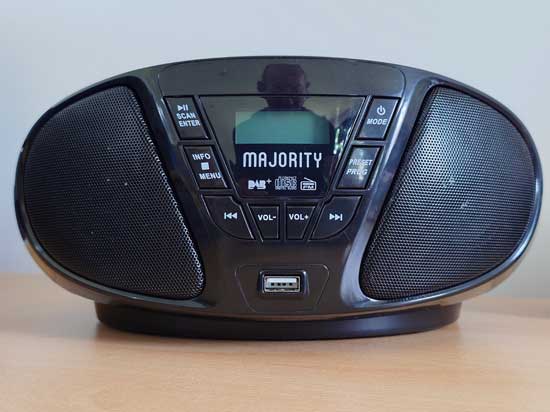
Off
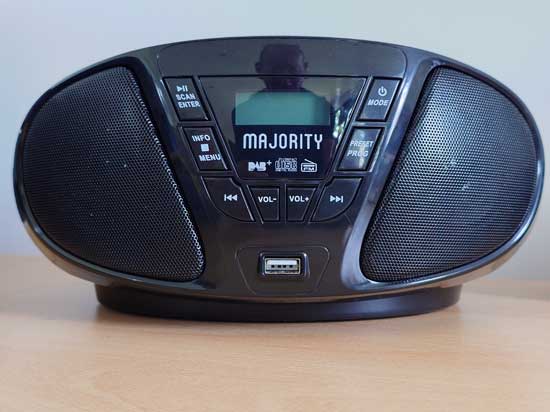
Auto
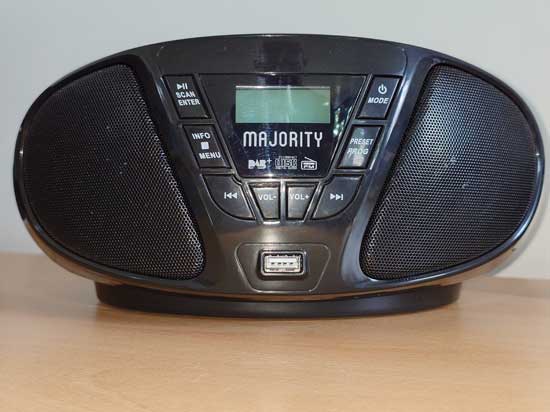
On

Light
DRO / HDR
The D-Range Optimiser (DRO) setting, which is set to Auto by default, attempts to balance the highlight and shadow areas of the image. There is also an HDR Auto setting which produces a more extreme optimisation. You can also choose to turn both settings off.
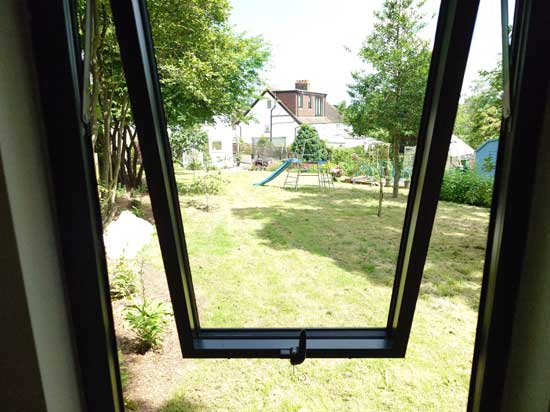
DRO/Auto HDR Off
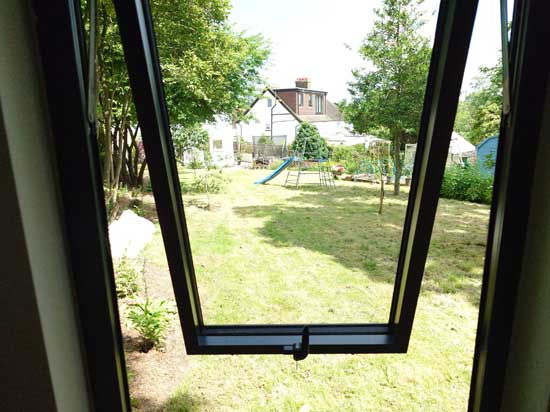
DRO Auto
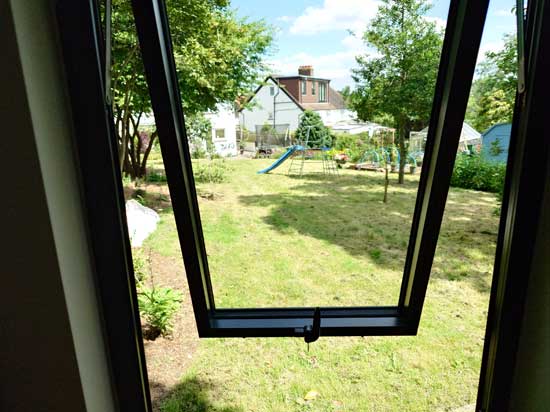
HDR Auto
Creative Looks
There are 6 different Creative Looks available when using the Pro shooting mode.

ST

NT

VV

FL

IN

SH
Sample Images
This is a selection of sample images from the Sony Xperia 1 VI camera, which were all taken using the 12 megapixel JPEG setting. The thumbnails below link to the full-sized versions, which have not been altered in any way.
Sample Movies & Video
This is a sample 4K movie at the quality setting of 3840×2160 pixels at 120 frames per second.
This is a sample 4K movie at the quality setting of 3840×2160 pixels at 60 frames per second.
This is a sample 4K movie at the quality setting of 3840×2160 pixels at 30 frames per second.
This is a sample 4K movie at the quality setting of 3840×2160 pixels at 24 frames per second.
This is a sample slow-motion 4K movie.
This is a sample slow-motion 1080p FHD movie.
Product Images




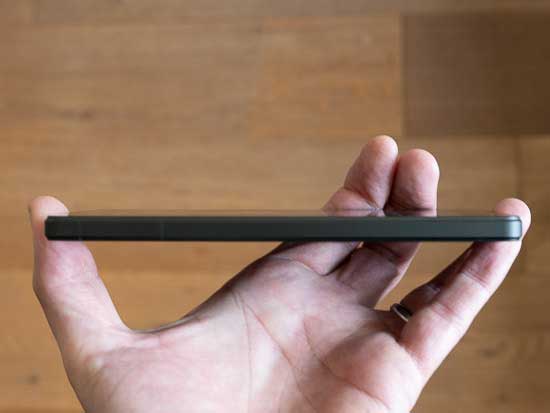




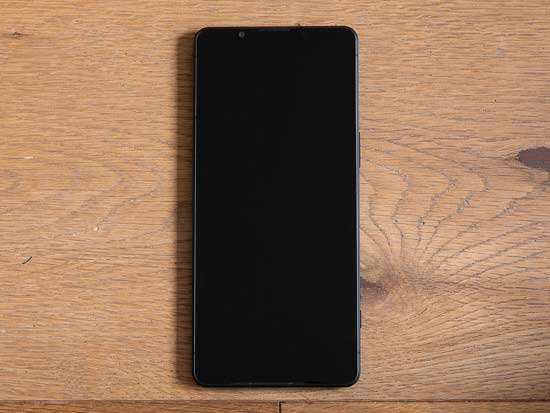
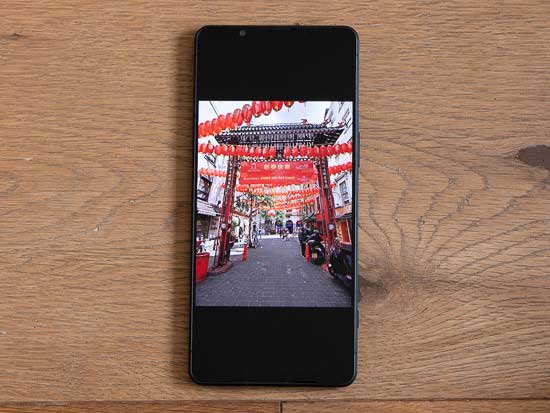





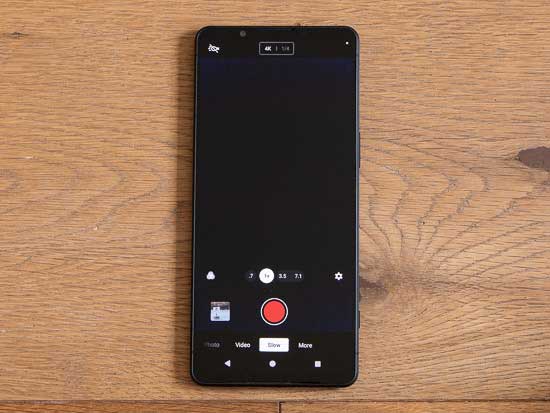


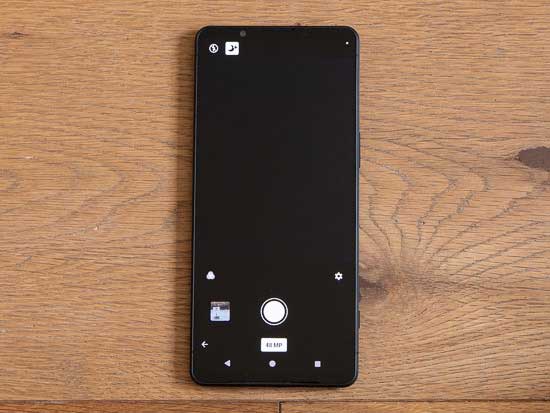
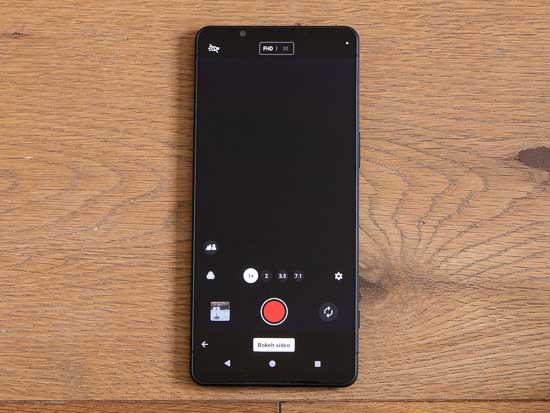
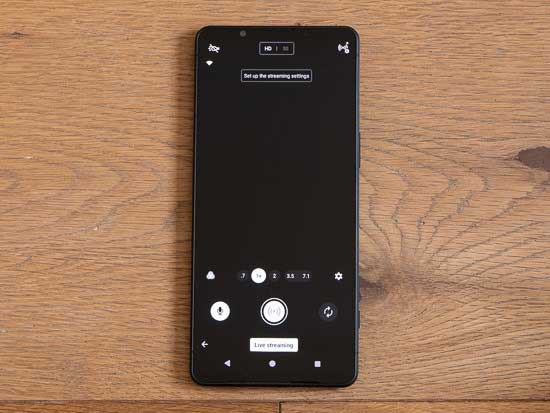
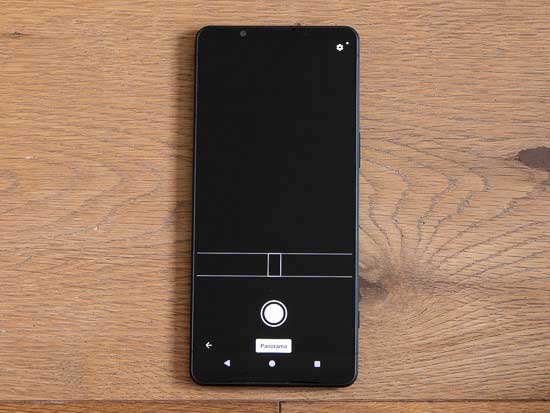
Conclusion
The Xperia I VI is the most mainstream flagship smartphone that Sony have ever released, with the more conventional 19.5:9 aspect ratio, brighter but lower-resolution FHD screen, simpler unified camera app and staggering battery life all designed to widen its appeal to a more mass-market audience.
Sony certainly haven’t forgotten this device’s core audience, though, with the longer 85-170mm telephoto camera module and new telephoto macro mode being particular highlights in this year’s Xperia 1.
The move to a single unified camera app does come as something of a mixed blessing, though, as we were big fans of the excellent Camera Pro and Video Pro apps found on previous models.
The more familiar app on the Xperia 1 VI is undoubtedly friendlier for more casual users, but unfortunately it doesn’t offer all of the features found on the Xperia V at launch.
This is especially true on the video side, with avid videographers having to wait until later in 2024 for a “video pro” firmware update.
The move to a 19.5:9 1080p screen is a big decision by Sony given the excellent and unusual 21:9 4K screen used on previous models, one that may disappoint hardcore fans.
The main upsides of that decision are the frankly stupendous battery life of up to 2 days and the much brighter screen that’s easier to see in bright sunlight, both obviously benefical for keen photographers.
With 30fps burst shooting, RAW format support, MicroSD card support, dedicated shutter button, 4K/120fps video and and live streaming support, the Xperia I VI is still one of the best phones on the market for keen photographers and videographers.
With an RRP of £1,299 / €1,400, the launch price pitches it directly against the very best flagship products from the likes of world-wide big-hitters like the Samsung Galaxy S24 Ultra and Apple iPhone 15 Pro Max, not to mention cheaper flagships like the Xiaomi 14 Ultra and Google Pixel 8 Pro.
The Xperia I VI is definitely a more well-rounded flagship device than previous iterations, but it’s probably going to still remain a rather niche product compared to those other flagship behemoths, especially as Sony have taken the curious decision not to release it in North America.
| Ratings (out of 5) | |
|---|---|
| Design | 4 |
| Features | 4 |
| Ease-of-use | 4.5 |
| Image quality | 4 |
| Value for money | 3 |
Main Rivals
Listed below are some of the rivals of the Sony Xperia 1 VI.
The Apple iPhone 13 is one of four new iPhones released for 2021, released at the same time as the Mini, Pro and Pro Max models. With prices starting at around £$779, is this a good fit for keen photographers? Read our in-depth iPhone 13 review now, complete with full-size sample photos and videos…

The Pixel 7 Pro is Google’s flagship smartphone for 2022, yet it’s priced at just £849 / $899. Does it offer similar performance and features to other, more expensive range-topping handsets? Read our in-depth Google Pixel 7 Pro review to find out just what it offers photographers and videographers, complete with full-size sample photos and videos.

The new Honor 50 marks the welcome return of Google Play services to the Huawei/Honor empire, but what else does this mid-range smartphone offer to keen photographers and videographers? Find out now by reading our in-depth review of the Honor 50, complete with full-size sample photos and videos.

The OnePlus 9 Pro is the latest flagship smartphone for 2021 from OnePlus. Find out if this is the best smartphone for photographers and videographers by reading our in-depth OnePlus 9 Pro review, complete with full-size sample photos and videos.

The Galaxy S23 Ultra is Samsung’s new no-holds-barred flagship smartphone for 2023. Featuring a quad-camera setup with 200 megapixels and a 10x optical zoom, 8K video recording, a 5000mAH battery and 5G connectivity, is this the ultimate smartphone for keen photographers? Find out now by reading our in-depth Samsung Galaxy S23 Ultra review, complete with full-size sample photos and videos…

The Sony Xperia 1 III is a new flagship smartphone for 2021 that has a lot to offer keen photographers and videographers. This includes 20fps burst shooting, real-time AF tracking and real time eye AF for humans and animals, 16mm, 24mm, 70mm and 105mm focal lengths, and advanced Photo Pro and Cinema Pro apps. Read our in-depth Sony Xperia 1 III review, complete with full-size sample photos and videos, to find out if this new smartphone can justify its £1199 / $1299 price-tag…

The Sony Xperia 1 IV is a new flagship smartphone for 2022 that is clearly aimed at keen photographers and videographers. Standout features include a true 85-125mm optical zoom, 4K/120p video recording, 20fps burst shooting, and advanced Photo Pro, Video Pro and Cinema Pro apps. Read our in-depth Sony Xperia 1 IV review, complete with full-size sample photos and videos, to find out if this new device can justify its £1299 / $1599 price-tag…

Not content with introducing their flagship Xperia I III smartphone earlier this year, Sony have taken things to a whole other level with the launch of the brand new Xperia PRO-I. Sporting a price-tag of £1,599 / $1,799, is this the ultimate smartphone for experienced photographers and videographers? Find out now by reading our Sony Xperia PRO-I review…
Review Roundup
Reviews of the Sony Xperia 1 VI from around the web.
The new Xperia 1 VI is finally here, and Sony is changing things this time around. In a surprising shift in product strategy, the new Xperia 1 VI is shedding some of the lineup’s staple features. To appeal to a broader audience, Sony is incorporating design and feature changes that have proven successful for its competitors. Despite these changes, the phone retains its core quirky identity, continuing to cater to creators and smartphone power users.
Read the full review »
The Xperia 1 VI is a technology showcase with its continuous zoom camera and macro performance. Sony has missed a trick by not readying pro video features for launch, but with an external monitor and recording functionality, an improved aspect ratio for photographs and 16:9 video, and excellent performance, the 1 VI is a great phone, even if its high price will turn many off.
Read the full review »
Sony has finally unveiled the Xperia 1 VI! This flagship device has been generating hype in the online space like a crazy hype… dynamo. The main reason is that there were rumors pointing toward a serious direction change for the Xperia lineup. Now that the Xperia 1 VI is official, we can delve deep into the changes and see what’s what.
Read the full review »
Specifications
| Size | |||||
|---|---|---|---|---|---|
| DIMENSIONS | 162 x 74 x 8.2 mm | ||||
| Weight | |||||
| WEIGHT | 192 g | ||||
| Display | |||||
| DISPLAY SIZE | 6.5″ 19.5:9 | ||||
| DISPLAY RESOLUTION | FHD+ HDR OLED (1080 x 2340) | ||||
| FEATURES | 120 Hz Refresh rate, 240 Hz Motion blur reduction, 240 Hz Touch scanning rate, Creator mode “powered by CineAlta” – Inspired by Master Monitor colour reproduction, DCI-P3 100%, ITU-R BT.2020 (REC.2020), Illuminant D65 White point, 10 bit tonal gradation, Powered by BRAVIA™, Sunlight Vision | ||||
| IMAGE PLAYBACK FORMAT | JPEG, GIF, PNG, BMP, WebP, WBMP, HEIF, DNG, CR2, NEF, NRW, ARW, RW2, ORF, RAF, PEF, SRW, AVIF | ||||
| VIDEO PLAYBACK FORMAT | H.263, H.264, H.265, MPEG-4 Video, AV1, VP8, VP9 | ||||
| Durability | |||||
| WATER RESISTANT | Water resistant(IPX5/IPX8), Dust proof(IP6X) | ||||
| DURABILITY | Corning® Gorilla® Glass Victus® 2 (Front), Corning® Gorilla® Glass Victus® (Rear) | ||||
| Rear Camera (1) | |||||
| RESOLUTION | 52 MP (Full aspect) / 48 MP (Effective) | ||||
| SIZE | 1/1.35″ Exmor T™ for mobile sensor | ||||
| PIXEL PITCH | 2.24 μm (12 MP binning size) | ||||
| APERTURE | F1.9 | ||||
| FOCAL LENGTH | 24 mm | ||||
| FIELD OF VIEW | 84° | ||||
| Rear Camera (2) | |||||
| RESOLUTION | 12 MP | ||||
| SIZE | 1/3.5″ Exmor RS™ for mobile sensor | ||||
| PIXEL PITCH | 1.0 μm | ||||
| APERTURE | F2.3(85 mm) – F3.5(170 mm) | ||||
| FOCAL LENGTH | 85 mm – 170 mm | ||||
| FIELD OF VIEW | 28° (85 mm) – 15° (170 mm) | ||||
| Rear Camera (3) | |||||
| RESOLUTION | 12 MP | ||||
| SIZE | 1/2.5″ Exmor RS™ for mobile sensor | ||||
| PIXEL PITCH | 1.4 μm | ||||
| APERTURE | F2.2 | ||||
| FOCAL LENGTH | 16 mm | ||||
| FIELD OF VIEW | 123° | ||||
| Camera Features | |||||
| PHOTOGRAPHY FEATURES | ZEISS® quality lenses calibrated specifically for Xperia 1 VI, 120 fps read out speed, Up to 30 fps AF/AE burst, Up to 60 times per second continuous AF/AE calculation, Real-time Eye AF(Human, Animal), Real-time Tracking, OIS photo, Photo flash, Photo light, Hybrid zoom 21.3x (based on Wide camera 24 mm), HDR (High Dynamic Range) photo, Night shooting function, Creative look | ||||
| IMAGE CAPTURE FORMAT | JPEG(.jpg), RAW(.dng) | ||||
| VIDEOGRAPHY FEATURES | 4K HDR Video recording 24, 30, 60 and 120 fps, Optical SteadyShot™ with FlawlessEye™, Object tracking, Eye AF, Creative look, S-Cinetone for mobile, Product Showcase setting, Live streaming, External monitor live streaming | ||||
| VIDEO RECORDING FORMAT | .mp4(H.264, H.265) | ||||
| Front Camera (1) | |||||
| RESOLUTION | 12 MP | ||||
| SIZE | 1/2.9″ Exmor RS™ for mobile sensor | ||||
| PIXEL PITCH | 1.22 μm | ||||
| APERTURE | F2.0 | ||||
| FOCAL LENGTH | 24 mm | ||||
| FIELD OF VIEW | 83° | ||||
| FEATURES | HDR (High Dynamic Range) photo, Display flash, Night shooting function, Creative look, S-Cinetone for mobile, Hand shutter (Photo), Live streaming, External monitor live streaming | ||||
| Audio | |||||
| HI-RES | Hi-Resolution Audio, High-Resolution Audio Wireless (LDAC) | ||||
| OTHER FEATURES | 3.5 mm audio jack, 360 Reality Audio Certified, 360 Reality Audio Upmix, Full-stage stereo speakers, Dolby Atmos®, DSEE Ultimate, Stereo Recording, Qualcomm® aptX™ Adaptive | ||||
| PLAYBACK FORMAT | AAC-LC, AAC+, eAAC+, AAC-ELD, AMR-NB, AMR-WB, FLAC, MP3, MIDI, Vorbis, PCM, Opus, Dolby Atmos, Dolby AC-4, 360 Reality Audio Music Format | ||||
| RECORDING FORMAT | AAC-LC, AAC+, AAC-ELD, AMR-NB, AMR-WB | ||||
| Memory & Storage | |||||
| RAM | 12 GB | ||||
| INTERNAL MEMORY | 256 GB UFS | ||||
| EXTERNAL MEMORY | microSDXC support (up to 1.5 TB) | ||||
| SIM Capability | |||||
| NUMBER OF SIM | Dual SIM | ||||
| SIM TYPE | nanoSIM / eSIM | ||||
| Operating System | |||||
| VERSION | Android™ 14 / 3 upgrades of OS / 4 years of security updates | ||||
| Processor | |||||
| CPU | Snapdragon® 8 Gen3 Mobile Platform | ||||
| Battery | |||||
| CAPACITY | 5000 mAh | ||||
| CHARGING TYPE | USB Power Delivery (USB PD) fast charging | ||||
| OTHER FEATURES | Xperia Adaptive Charging, Battery Care, STAMINA Mode, Qi Wireless charging, Battery Share function | ||||
| Networks | |||||
| 2G BAND | 850, 900, 1800, 1900 | ||||
| 3G BAND | 2100(Band1), 1900(Band2), 1700(Band4), 850(Band5), 800(Band6), 900(Band8), 800(Band19) | ||||
| 4G BAND | 1, 2, 3, 4, 5, 7, 8, 12, 13, 17, 19, 20, 25, 26, 28, 29, 32, 34, 38, 39, 40, 41, 46, 66 | ||||
| 5G BAND | [NSA] n1, n3, n5, n7, n8, n20, n28, n38, n40, n41, n75, n77, n78 [SA] n1, n3, n7, n8, n20, n28, n38, n40, n75, n77, n78 | ||||
| Connectivity | |||||
| Wi-Fi | IEEE802.11a/b/g/n/ac/ax, 2.4/5/6 GHz | ||||
| LOCATION | A-GPS, A-GLONASS, Beidou, Galileo, QZSS | ||||
| BLUETOOTH | Bluetooth® 5.4 wireless technology, Bluetooth® LE Audio | ||||
| USB TYPE | Type-C® | ||||
| USB VERSION | SuperSpeed USB 5 Gbps (USB 3.2) | ||||
| OTHER FEATURES | Smart connectivity, Google Cast, NFC, Output video/image via Display Port support Type-C® Cable or Type-C® to HDMI Adapter Cable (Display port 4K/60 fps) | ||||
| Sensors | |||||
| SENSOR TYPE | Fingerprint sensor | ||||
| Accessibility | |||||
| ACCESSIBILITY | Hearing Aid Compatibility (HAC), Teletypewriter (TTY) /SERVICES: Live Transcribe, Sound notifications /SCREEN READERS: Select to Speak, TalkBack, Text-to-speech output /DISPLAY: Font size, Display size, Bold text, Dark theme, Magnification, Colour correction, Colour inversion, Large mouse pointer, Extra dim, Remove animations /INTERACTION CONTROLS: Accessibility Menu, Switch Access, Click after mouse pointer stops moving, Power button ends call, Auto-rotate screen, Touch & hold delay, Time to take action (Accessibility timeout), Vibration & haptic strength, System navigation, One-handed mode /AUDIO & ON-SCREEN TEXT: Audio description, Camera flash notification, Screen flash notification, Mono audio, Audio balance, Caption preferences /EXPERIMENTAL: High contrast text, Accessibility button, Shortcut from lock screen | ||||
Your Comments
[adinserter block=”1″]
Credit : Source Post

